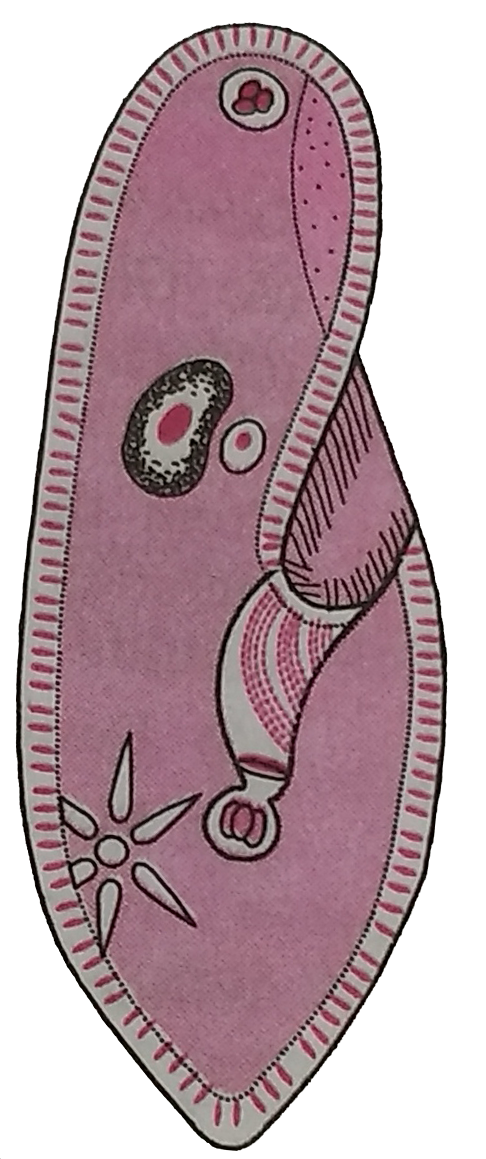Mention the characteristic features of liverworts
Step-by-Step Solution:
1. Definition of Liverworts: Liverworts are small, green, terrestrial plants that belong to the group of non-vascular plants.
2. Size and Color: They are generally small in size and are predominantly green in color.
3. Absence of True Roots: Liverworts do not possess true roots. Instead of roots, they have structures called rhizoids that help anchor them to the substrate.
4. Absence of True Stems and Leaves: Similar to their lack of true roots, liverworts also do not have true stems or true leaves. Instead, they have leaf-like structures or a thallus body.
5. Growth Habit: Liverworts typically grow above the ground, often found in moist environments, where they can thrive without the need for true vascular structures.
6. Thallus Structure: The body of liverworts is often flat and lobed, resembling a leaf, which is referred to as a thallus. This thallus is the main photosynthetic structure of the plant.
7. Rhizoids: The underground structures of liverworts are called rhizoids. These are not true roots but serve to anchor the plant to the soil or substrate.
Summary of Characteristic Features:
- Small, green, terrestrial plants
- Lack of true roots, stems, and leaves
- Presence of leaf-like structures or thallus
- Growth above the ground
- Rhizoids for anchorage
---
- Small, green, terrestrial plants
- Lack of true roots, stems, and leaves
- Presence of leaf-like structures or thallus
- Growth above the ground
- Rhizoids for anchorage
Topper's Solved these Questions
- BOOK - PEARSON IIT JEE FOUNDATIONCHAPTER - DIVERSITY IN LIVING WORLD - PLANTSEXERCISE - MASTERING THE CONCEPTS (Application and Analysis )17videos
DIVERSITY IN LIVING WORLD - PLANTS
- BOOK - PEARSON IIT JEE FOUNDATIONCHAPTER - DIVERSITY IN LIVING WORLD - PLANTSEXERCISE - MASTERING THE CONCEPTS (Assertions and Reasons )24videos
DIVERSITY IN LIVING WORLD - PLANTS
- BOOK - PEARSON IIT JEE FOUNDATIONCHAPTER - DIVERSITY IN LIVING WORLD - PLANTSEXERCISE - TEST YOUR CONCEPTS91videos
DIVERSITY IN LIVING WORLD - PLANTS
- BOOK - PEARSON IIT JEE FOUNDATIONCHAPTER - CELL - FUNDAMENTAL UNIT OF LIFE EXERCISE - ASSESSMENT TESTS (GIVE SCIENTIFIC REASONS)4videos
CELL - FUNDAMENTAL UNIT OF LIFE
- BOOK - PEARSON IIT JEE FOUNDATIONCHAPTER - DIVERSITY IN LIVING WORLD- ANIMALSEXERCISE - ASSESSMENT TESTS44videos
DIVERSITY IN LIVING WORLD- ANIMALS
Similar Questions
Knowledge Check
- Question 1 - Select One
Identify the characteristic features of diatoms
 ACell wall is made of cellulose floating on water and produce auxosporesBCell wall is made of chitin, fixed forms and produce auxosporesCCell wall is made of silica, floating on water and produce auxosporesDCell wall is made of symbionts and produce zoospores.
ACell wall is made of cellulose floating on water and produce auxosporesBCell wall is made of chitin, fixed forms and produce auxosporesCCell wall is made of silica, floating on water and produce auxosporesDCell wall is made of symbionts and produce zoospores. - Question 2 - Select One
Identify the characteristics features of diatoms
ACell wall is made of cellulose, floating om water and produce auxosporesBCell wall is made of chitin, fixed form and produce auxoporesCCell wall is made of silica, floating on water and produce auxosporesDCell wall is made of silica symbiots and produce zoospores - Question 3 - Select One
The characteristic features of solids are:
ADefinite shapeBDefinite sizeCDefinite shape and sizeDDefinite shape, size and rigidity.

Answer the following questions based on the above figure.
Mention the characteristic features for adaptation in the habitat.View Solution(a) Identify the pollination that generally takes place in bisexual flowers.
(b) Mention the specific characteristic features of the flowers involved in this type of pollination.View SolutionWhich are the most widespread forests of India? Mention any two characteristic features of these forests.
View SolutionMetamerism is characteristic feature of
View SolutionPlacenta is a characteristic feature of
View Solution

